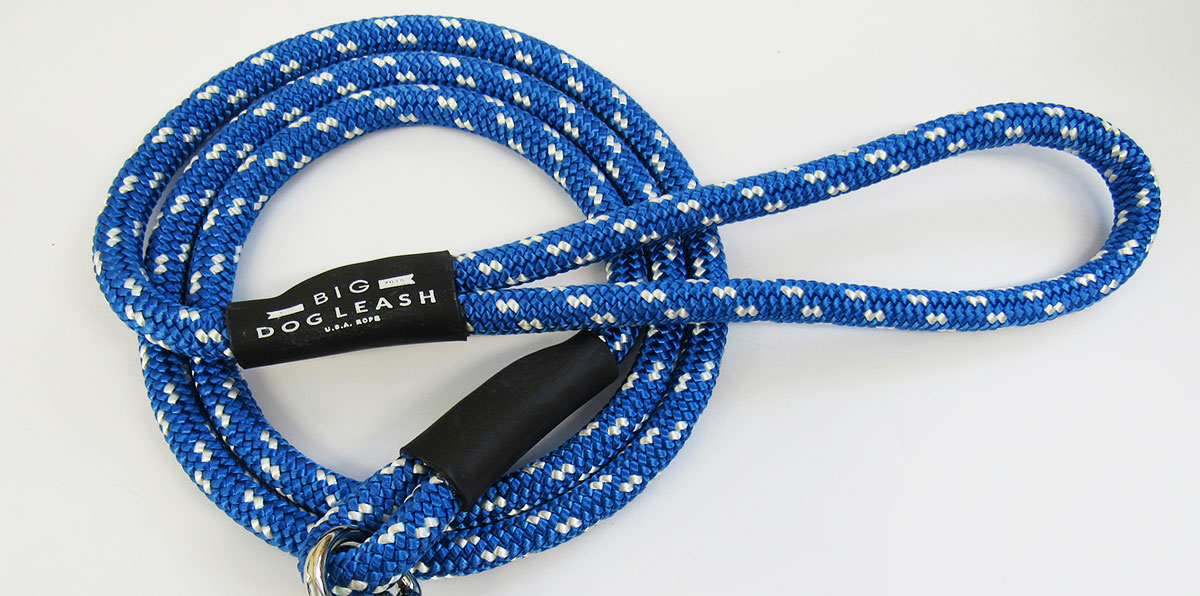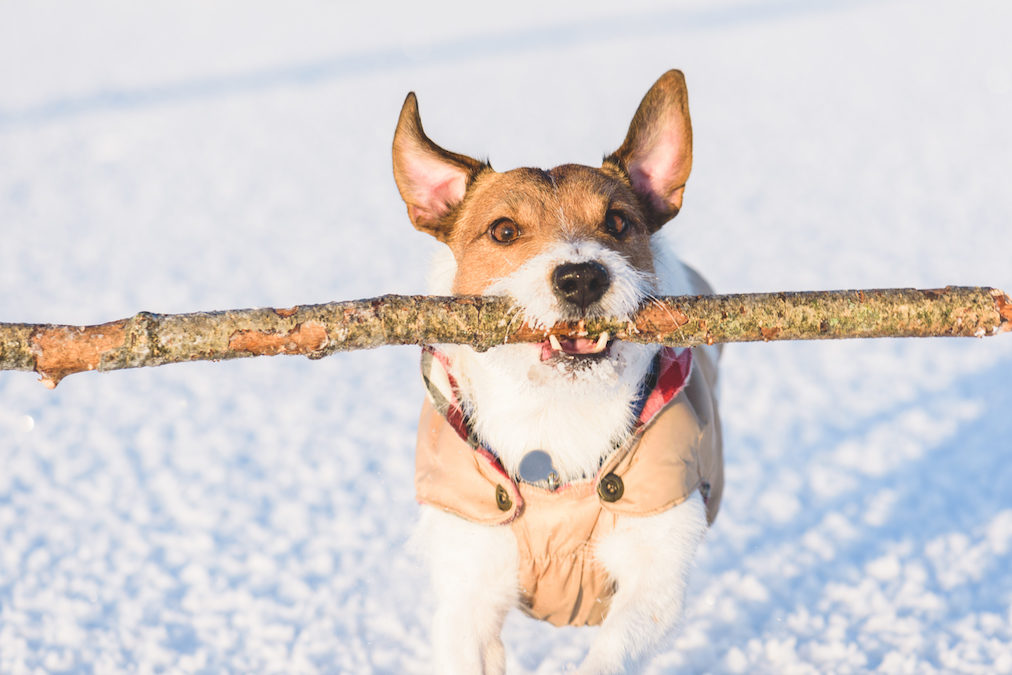As summer comes to an end, we realize what’s around the corner: below freezing weather, wind chills of 40+, and a lot of hot cocoa. Soon we will be packing up our swimsuits and bringing out our snowsuits, and in no time at all, we’ll be walking in a winter wonderland. As you pull out your winter boots and jacket, don’t forget about what your dog will need to keep warm and safe while he or she is outside. Sure, dogs have a fur coat, but when the temperature drops, it may not be enough to protect him or her against the snow and ice. Here are six ways to get your dog ready for winter.
Get a Veterinary Checkup Before the Cold Strikes & Don’t Forget to Fill Your Pet’s Prescriptions
First thing’s first. Make sure your dog is up to date with their vaccinations, and all prescription are filled and has refills if needed. The cold weather can cause discomfort for pets suffering from arthritis, skin problems, or other medical issues. Getting a veterinary checkup before lousy weather strikes will ensure your pet is healthy and ready to face the winter season. Whether your pet takes insulin, pain medications, or thyroid medications, you’ll need to have these prescriptions filled and on hand in case of a snowstorm. These events may slow down shipments to stores and veterinary clinics or even prevent you from being able to get out and fill last-minute medications.
Don’t forget the importance of maintaining flea medicine for your dog. Fleas don’t disappear when the weather gets cold, so keeping pets protected is an essential part of care year-round. These pests love a warm host and will feed off of your pal when the need arises. Pet owners should also be aware that fleas can remain dormant for several weeks to months and emerge when the conditions are right. So keep them safe by continuing to give the flea medications throughout the winter season.
Invest in Some Cold Weather Attire for Your Dog
Having proper attire for you pal is critical during the winter seasons. This is especially helpful for dogs with shorter fur who don’t have a thick coat to rely on to keep them warm. The sooner you get your animal used to wearing an accessory, such as a jacket or boots, the better. Another critical thing to remember when getting your dog ready for the winter is to make sure their ears are kept dry to prevent any infections. You don’t have to get them earmuffs necessarily, but if your dog often plays in the snow, make sure to dry their ears when they come in to prevent painful ear infections that can last for weeks at a time.
Another winter accessory dog owners should consider getting for the winter is a heavy-duty rope dog leash from TheBigDogLeash which are entirely customizable in color and length to fit all dog sizes and strengths. TheBigDogLeash offers durable rope dog leashes are crafted and produced in the USA, using only the finest of materials. They are constructed with 100% Polyester braided rope to ensure an extended life against wear-and-tear. Each rope leash features a nickel-plated side clasp with easy release hook and a looped handle for better grip. TheBigDogLeash is excellent for winter because it can allow you to slowly work your dog into the cold to use the restroom while giving you the chance to stay inside the doorway. These leashes and is durable enough to withstand the harsh weather conditions that come with winter.

Take a Look at TheBigDogLeash’s Heavy-Duty Rope Leashes & Choose Your Customized Leash Today!
Protect Your Dog’s Skin from the Harsh Weather Conditions
Does your dog deal with dry, itchy skin? We can all attest to this winter pest–our skin getting dry and flaky thanks to the cold air outside and the warm, dry air inside. This problem plagues dogs as well. To help both you and your dog’s skin health, consider using a humidifier. This handy appliance adds moisture into the air, which in turn helps keep skin hydrated. Regular brushings can also help with this issue, as it gets rid of dead hair and stimulates your dog’s coat to produce more oils. If you bathe your dog, use shampoos with oatmeal to help soothe their skin. Outdoors become a safety hazard for both you and your dog as well. With frozen sidewalks and roadways around your house, uncomfortable and even dangerous situations for dogs can arise, especially if they are treated with de-icing products like rock salt. Apply petroleum jelly to their paw pads before venturing outdoors or using pet booties to help minimize contact with harmful ice-melting agents
Slowly Acclimate Your Pet to Cold Weather
If you have a dog who spends the majority of their time indoors and you plan to take them outdoors during the winter season for a walk or run, allow them to get used to colder weather, wind, and other weather conditions before so that the needed adjustment is less dramatic. Begin taking your dog outside for walks as the weather starts to cool off. Start slow and gradually build up the amount of time that you keep your pup outdoors. Also, keep in mind to limit the time spent outdoors because even dogs can get frostbite. Don’t leave your dog outside for long periods of time and never leave them in the backyard alone during this time of year, especially if they are an indoor dog. Remember, sunny winter days can be deceiving because wind chills can make the actual temperature colder than it is. Finally, make sure you winterproof your home. Drafts sneak in under doors, and tile floors become unbearably cold. Keep your dog away from drafty areas and give him an extra warm blanket or pad if they like to lie on the tiled floors.
Keep Extra Pet Food on Hand
Snowstorms could keep you and your loved ones cooped up for days, so it’s a good idea to stock up on additional pet food and healthy treats. If you’re in a pinch and find yourself without food in the face of a storm, boil skinless and boneless chicken and rice for a bland stand-in. Some other foods dogs can eat as food replacement during an emergency snow storm include:
- Canned vegetables like peas, carrots, and corn (rinsed to remove extra sodium)
- Canned chicken and fish packed in water (thoroughly cleaned and drained)
- Low-sodium beef, chicken, or vegetable broth
- Plain, cooked oatmeal
- Eggs
- Low-sodium cold cuts (sliced turkey from the deli is okay; processed, preserved bologna is not)
- Mild cheese like Colby or cheddar
- Steamed or boiled peas, broccoli, or corn
Have Emergency Plans in Place
A reasonable precaution for when you get stuck at work due to snow and can’t make it home to feed your dog and get them out for their walk is to make sure a friend or neighbor has a key to your house/apartment. It’s also a good idea to have an emergency plan in place if you get snowed in with your pets or caught out in a blizzard. This involves keeping your pet warm by wrapping them in blankets and jackets, having extra food on hand, and most important, making sure that your pet is sufficiently hydrated. It is essential to keep your dog–and yourself–warm and well fed is keeping them hydrated. People quickly forget that dogs dehydrate in cold weather, too. If you find yourself without access to fresh water, you can always melt snow water for your pal. In extreme cases–if your stove is out of commission–put the snow in Ziploc baggies and wrap them in a towel to melt.
We’re sorry to be the bearer of bad news, but winter is on its’ way. The best we can do is be prepared for whatever lies ahead. Make sure you have done all six of these checkpoints and provide you and your pal with a safe, and semi-warm winter. Contact TheBigDogLeash for any further question on getting you dog ready for the winter season.

